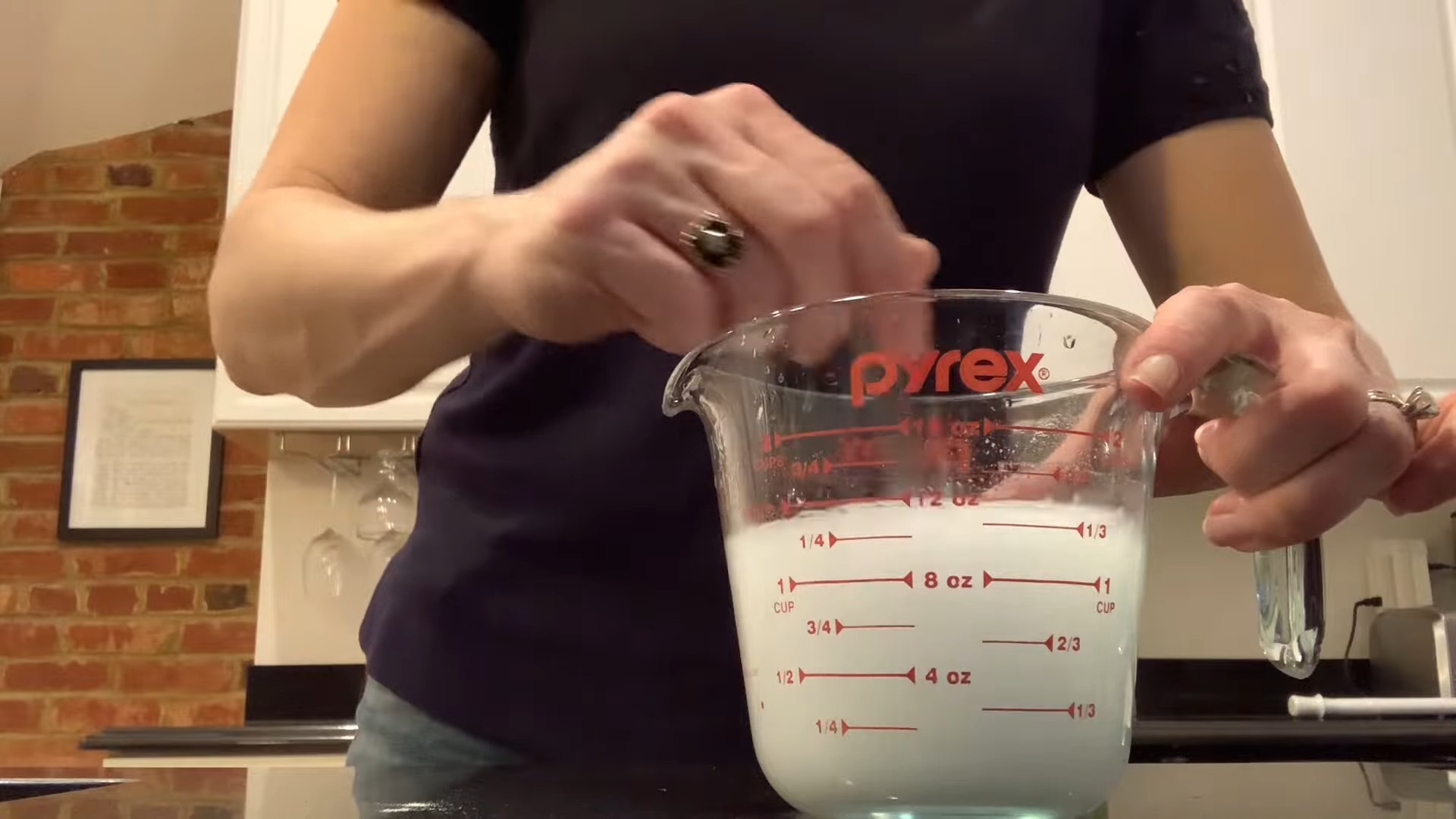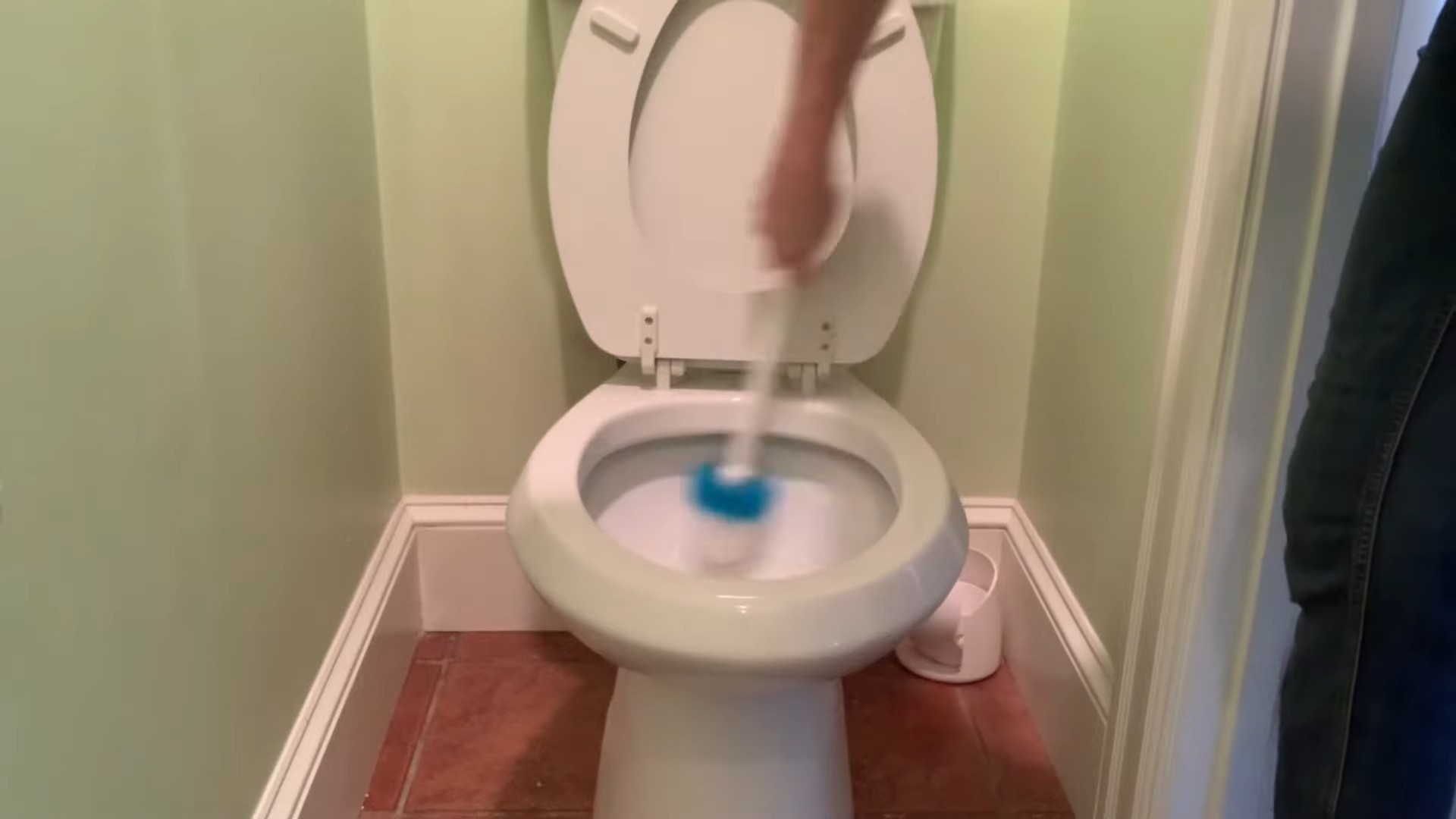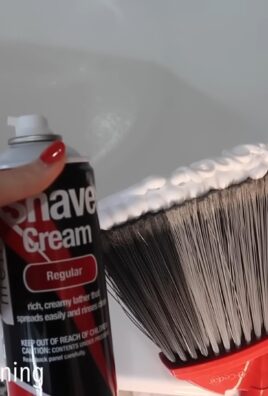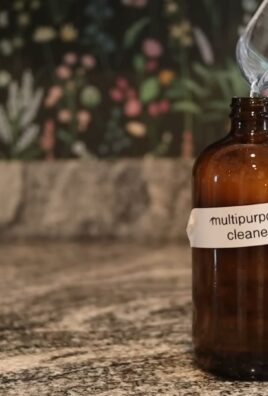DIY Cleaning Products Recipes: Unlock the secrets to a sparkling clean home without breaking the bank or exposing your family to harsh chemicals! Have you ever wondered if you could ditch those expensive, store-bought cleaners and create your own powerful solutions using ingredients you probably already have in your pantry? I know I have! For generations, resourceful homemakers have relied on simple, natural ingredients like vinegar, baking soda, and lemon juice to keep their homes fresh and germ-free. In fact, before the advent of mass-produced cleaning products, these were the go-to solutions for everything from scrubbing floors to disinfecting surfaces.
Today, as we become increasingly aware of the environmental impact and potential health risks associated with commercial cleaners, the appeal of DIY cleaning products recipes is stronger than ever. Not only are they eco-friendly and cost-effective, but they also allow you to customize your cleaning solutions to suit your specific needs and preferences. Imagine the satisfaction of knowing exactly what’s in your cleaning spray and the peace of mind that comes with using safe, natural ingredients around your loved ones.
This article is your ultimate guide to creating a range of effective and easy-to-make DIY cleaning products. We’ll explore simple recipes for everything from all-purpose cleaners to laundry detergents, empowering you to transform your home into a sparkling sanctuary, naturally!

DIY Cleaning Products: Natural & Effective Recipes
Hey there, fellow DIY enthusiasts! I’m so excited to share some of my favorite homemade cleaning product recipes with you. Not only are these recipes super easy to make, but they’re also much gentler on the environment and your wallet than store-bought cleaners. Plus, you’ll know exactly what’s going into them, avoiding harsh chemicals and mystery ingredients. Let’s get started!
All-Purpose Cleaner
This is my go-to cleaner for almost everything! It’s fantastic for wiping down countertops, cleaning appliances, and even mopping floors.
Ingredients:
* 1/2 cup white vinegar
* 1/4 cup baking soda
* 1/2 gallon (8 cups) hot water
* 10-15 drops essential oil (lemon, lavender, tea tree, or eucalyptus are great choices)
* Spray bottle
Instructions:
1. Combine Ingredients: In a large bucket or bowl, dissolve the baking soda in the hot water. This helps prevent clumping.
2. Add Vinegar: Slowly pour in the white vinegar. It will fizz a bit, which is perfectly normal.
3. Add Essential Oils: Add your chosen essential oils. These not only provide a pleasant scent but also offer additional cleaning and disinfecting properties. Lemon is a natural degreaser, tea tree is antibacterial, and lavender is calming.
4. Mix Well: Stir everything together until well combined.
5. Transfer to Spray Bottle: Carefully pour the mixture into a spray bottle. I like to use a funnel to avoid spills.
6. Use and Store: Spray the cleaner onto surfaces and wipe clean with a cloth or sponge. Store the remaining cleaner in a cool, dark place. It should last for several months.
Important Note: While this cleaner is generally safe for most surfaces, it’s always a good idea to test it on an inconspicuous area first, especially on delicate materials like marble or granite.
Glass Cleaner
Say goodbye to streaks with this simple and effective glass cleaner!
Ingredients:
* 2 cups water
* 1/4 cup white vinegar
* 1/2 teaspoon liquid dish soap (optional, but helps cut through grease)
* Spray bottle
* Microfiber cloth
Instructions:
1. Combine Ingredients: In a spray bottle, combine the water, white vinegar, and dish soap (if using).
2. Shake Well: Shake the bottle gently to mix the ingredients.
3. Spray and Wipe: Spray the cleaner onto your windows, mirrors, or glass surfaces.
4. Wipe Clean: Use a clean microfiber cloth to wipe the surface dry. Microfiber cloths are excellent for streak-free cleaning.
Tips for Streak-Free Cleaning:
* Use a clean microfiber cloth.
* Avoid cleaning glass in direct sunlight, as the cleaner can dry too quickly and leave streaks.
* If you have stubborn streaks, try wiping the surface with a damp cloth and then drying it with a clean, dry cloth.
Toilet Bowl Cleaner
This fizzing toilet bowl cleaner is a natural and effective way to keep your toilet sparkling clean.
Ingredients:
* 1 cup baking soda
* 1/2 cup citric acid (this is what causes the fizzing action)
* 10-15 drops essential oil (tea tree, eucalyptus, or peppermint are great choices for their antibacterial properties)
* Spray bottle with water (for dampening)
Instructions:
1. Combine Dry Ingredients: In a bowl, combine the baking soda and citric acid.
2. Add Essential Oils: Add your chosen essential oils.
3. Mix Well: Stir the ingredients together thoroughly.
4. Dampen the Mixture: Lightly spray the mixture with water, just enough to dampen it slightly. You want it to clump together when you squeeze it, but not be too wet. Be careful not to add too much water, as it will activate the fizzing reaction prematurely.
5. Form into Tablets (Optional): If you want to make tablets, press the mixture firmly into silicone molds (ice cube trays or candy molds work well). Let them dry completely for several hours or overnight.
6. Store: Store the mixture (or tablets) in an airtight container in a cool, dry place.
7. Use: To use, sprinkle about 1/4 cup of the mixture (or drop in a tablet) into the toilet bowl. Let it fizz for a few minutes, then scrub with a toilet brush and flush.
Safety Note: Citric acid can be irritating to the skin, so it’s a good idea to wear gloves when handling it.
Drain Cleaner
Unclog those drains naturally with this simple baking soda and vinegar solution.
Ingredients:
* 1/2 cup baking soda
* 1 cup white vinegar
* Hot water
Instructions:
1. Pour Baking Soda: Pour the baking soda down the drain.
2. Add Vinegar: Immediately pour the white vinegar down the drain.
3. Let it Fizz: Let the mixture fizz for about 30 minutes. The fizzing action helps to break down grease and debris.
4. Flush with Hot Water: After 30 minutes, flush the drain with hot water for several minutes to clear away the loosened debris.
5. Repeat if Necessary: If the drain is still clogged, repeat the process.
Preventative Maintenance: To prevent clogs, pour a cup of boiling water down your drains once a week.
Furniture Polish
Give your wooden furniture a natural shine with this simple polish.
Ingredients:
* 1/4 cup olive oil
* 1 tablespoon white vinegar or lemon juice
* Soft cloth
Instructions:
1. Combine Ingredients: In a small bowl, combine the olive oil and white vinegar or lemon juice.
2. Apply to Furniture: Dip a soft cloth into the mixture and apply a thin layer to your wooden furniture.
3. Buff: Use a clean, dry cloth to buff the furniture until it shines.
Important Note: Always test the polish on an inconspicuous area of your furniture first to ensure it doesn’t damage the finish.
Oven Cleaner
Cleaning the oven is never fun, but this natural oven cleaner makes the job a little easier.
Ingredients:
* 1/2 cup baking soda
* Water
* White vinegar
* Spray bottle
* Scrub brush or sponge
Instructions:
1. Remove Oven Racks: Remove the oven racks and set them aside.
2. Make a Baking Soda Paste: In a bowl, mix the baking soda with enough water to form a thick paste.
3. Coat the Oven: Spread the baking soda paste all over the inside of the oven, avoiding the heating elements.
4. Let it Sit: Let the paste sit for at least 12 hours, or overnight.
5. Spray with Vinegar: The next day, spray the baking soda paste with white vinegar. This will cause it to fizz.
6. Scrub: Use a scrub brush or sponge to scrub away the loosened grime.
7. Wipe Clean: Wipe the oven clean with a damp cloth.
8. Replace Racks: Replace the oven racks.
Tips for Stubborn Stains: For stubborn stains, you may need to scrub a little harder or let the baking soda paste sit for a longer period of time.
Dish Soap
Making your own dish soap is a bit more involved, but it’s worth it for a truly natural and gentle cleaning solution.
Ingredients:
* 1 cup distilled water
* 1/4 cup liquid castile soap (like Dr. Bronner’s)
* 1 tablespoon washing soda (sodium carbonate)
* 1 teaspoon vegetable glycerin (optional, for extra moisturizing)
* 10-15 drops essential oil (lemon, grapefruit, or orange are great choices)
* Soap dispenser
Instructions:
1. Heat Water: Heat the distilled water in a saucepan over medium heat. Do not boil.
2. Add Washing Soda: Slowly add the washing soda to the warm water, stirring until it dissolves completely.
3. Remove from Heat: Remove the saucepan from the heat and let the mixture cool slightly.
4. Add Castile Soap: Gently stir in the liquid castile soap. Be careful not to create too many bubbles.
5. Add Glycerin (Optional): If using, add the vegetable glycerin.
6. Add Essential Oils: Add your chosen essential oils.
7. Mix Well: Stir everything together gently until well combined.
8. Transfer to Soap Dispenser: Pour the mixture into a soap dispenser.
9. Use: Use as you

Conclusion
So, there you have it! Ditching the harsh chemicals and embracing the power of homemade cleaning solutions is not just a trend; it’s a conscious choice for a healthier home, a happier planet, and a lighter wallet. We’ve explored a range of simple yet effective DIY cleaning products recipes that can tackle everything from grimy countertops to stubborn toilet stains.
Why is this a must-try? Because you’re in control. You know exactly what’s going into your cleaning solutions, eliminating the mystery ingredients and potential allergens found in many commercial products. You’re reducing your plastic consumption by reusing spray bottles and containers. And, let’s be honest, there’s a certain satisfaction that comes from creating something yourself, especially when that something helps you maintain a sparkling clean home.
But the beauty of these DIY cleaning products recipes lies in their adaptability. Feel free to experiment with essential oils to create your signature scents. Lavender, lemon, tea tree, and eucalyptus are all popular choices for their antibacterial and antiviral properties, as well as their delightful aromas. For a stronger degreaser, add a bit more vinegar to your all-purpose cleaner. If you’re dealing with hard water stains, consider using distilled water in your recipes to prevent mineral buildup.
Don’t be afraid to get creative! You can even infuse your vinegar with citrus peels for a more potent and fragrant cleaning agent. Simply place citrus peels (lemon, orange, grapefruit, etc.) in a jar, cover them with white vinegar, and let them steep for a few weeks. Strain the vinegar and use it in your cleaning recipes for an extra boost of cleaning power and a refreshing scent.
We encourage you to take the plunge and try these DIY cleaning products recipes. Start with one or two that appeal to you and see the difference they can make in your home. You might be surprised at how effective and enjoyable homemade cleaning can be.
And most importantly, we want to hear about your experiences! Share your favorite recipes, variations, and tips in the comments below. Let us know what worked for you, what challenges you encountered, and any creative solutions you came up with. Together, we can build a community of eco-conscious cleaners who are passionate about creating a healthier and more sustainable world, one sparkling clean surface at a time. Your feedback will not only help other readers but also inspire us to continue developing and refining these DIY cleaning products recipes. So, get cleaning, get creative, and get sharing!
Frequently Asked Questions (FAQs)
Are DIY cleaning products as effective as store-bought cleaners?
Yes, many DIY cleaning products are just as effective, if not more so, than their store-bought counterparts. The key is using the right ingredients for the specific cleaning task. For example, vinegar is a powerful disinfectant and degreaser, while baking soda is a gentle abrasive that can scrub away grime. Many commercial cleaners rely on harsh chemicals that can be harmful to your health and the environment. DIY options offer a safer and often equally effective alternative. However, it’s important to note that some DIY solutions may not be suitable for all surfaces. Always test a small, inconspicuous area first to ensure compatibility.
What are the essential ingredients I need to get started with DIY cleaning?
A few key ingredients will set you up for success in the world of DIY cleaning. White vinegar is a must-have for its disinfecting and degreasing properties. Baking soda is a gentle abrasive and deodorizer. Washing soda (sodium carbonate) is a stronger cleaner than baking soda and is great for laundry and tough stains. Castile soap is a versatile, plant-based soap that can be used for a variety of cleaning tasks. Essential oils add fragrance and can also provide antibacterial and antiviral benefits. Finally, having spray bottles, microfiber cloths, and scrub brushes on hand will make the cleaning process easier and more efficient.
Are DIY cleaning products safe for all surfaces?
Not all DIY cleaning products are safe for all surfaces. For example, vinegar can damage natural stone surfaces like marble and granite. It’s also not recommended for use on waxed wood floors. Always check the manufacturer’s recommendations for your specific surfaces before using any cleaning product, whether it’s store-bought or homemade. When in doubt, test the cleaner on a small, inconspicuous area first to ensure it doesn’t cause any damage or discoloration. For delicate surfaces, consider using gentler options like castile soap and water.
How long do DIY cleaning products last?
The shelf life of DIY cleaning products varies depending on the ingredients. Solutions containing water are more prone to bacterial growth and should be used within a few weeks. Products made with vinegar, baking soda, and essential oils tend to last longer, typically several months. To extend the shelf life of your DIY cleaners, store them in a cool, dark place in airtight containers. Label each bottle with the date it was made so you can keep track of its freshness. If you notice any changes in color, odor, or consistency, it’s best to discard the product and make a fresh batch.
Can I use essential oils in all of my DIY cleaning products?
While essential oils can add fragrance and antibacterial properties to your DIY cleaning products, it’s important to use them safely and responsibly. Some essential oils can be irritating to the skin or respiratory system, so always dilute them properly before use. Avoid using essential oils around pets, especially cats, as some can be toxic to them. When choosing essential oils, opt for high-quality, pure oils from reputable sources. Start with a small amount and adjust to your preference. Always research the specific properties and safety precautions of each essential oil before using it in your cleaning recipes.
What are some common mistakes to avoid when making DIY cleaning products?
One common mistake is mixing vinegar and bleach, which creates toxic chlorine gas. Never combine these two ingredients. Another mistake is using too much essential oil, which can be irritating and wasteful. Always dilute essential oils properly. Failing to label your cleaning products can also lead to confusion and potential misuse. Be sure to clearly label each bottle with the contents and date it was made. Finally, neglecting to test the cleaner on a small, inconspicuous area can result in damage to the surface. Always test before applying the cleaner to a larger area.
How can I make my DIY cleaning routine more sustainable?
There are several ways to make your DIY cleaning routine more sustainable. Start by reusing spray bottles and containers instead of buying new ones. Purchase ingredients in bulk to reduce packaging waste. Compost citrus peels and other food scraps that you use to infuse your cleaning solutions. Use microfiber cloths instead of paper towels, as they can be washed and reused multiple times. Choose eco-friendly essential oils from sustainable sources. And finally, educate yourself about the environmental impact of different cleaning ingredients and make informed choices about the products you use. By making small changes to your cleaning habits, you can significantly reduce your environmental footprint.
Where can I find reliable recipes for DIY cleaning products?
There are many resources available online and in print for finding reliable DIY cleaning products recipes. Look for recipes from reputable sources, such as established blogs, websites, and books that focus on natural cleaning and sustainable living. Be sure to read reviews and comments from other users to get a sense of the recipe’s effectiveness and safety. When in doubt, consult with a professional cleaner or environmental expert for guidance. Always prioritize safety and use common sense when trying new DIY cleaning products recipes.




Leave a Comment